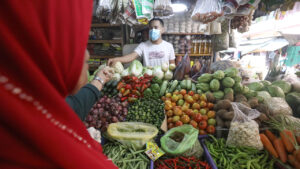By John Victor D. Ordoñez, Reporter
PRESIDENT Ferdinand R. Marcos, Jr. instructed the Department of Agriculture (DA) on Wednesday to study the potential effect of the El Niño weather phenomenon on prices of agricultural products in the country in order for concerned agencies to prepare countermeasures.
“We are doing an analysis now of prices of food to see what the appropriate fiscal measures… we can undertake,” the President told a press briefing.
Mr. Marcos said the data gathered would be added to an online interagency database on the government’s efforts to address the effects of El Niño, which is associated with lack of rainfall.
He added that the DA was also exploring new methods to boost farmers’ yields.
“We are putting together data from the Department of Science and Technology, Department of Environment and Natural Resources… and others so that the concerned agencies can come up with a model using the data,” he said.
On Tuesday, The President ordered the creation of an interagency task force to address the effects of El Niño, which is expected to cause dry spells nationwide until the second quarter of 2024.
State agencies would focus on coming up with ways to effectively manage energy and food supplies to brace for impending dry spells.
Mr. Marcos on Wednesday led the turnover of P776 million worth of excavators in Nueva Ecija, which would be used by the National Irrigation Administration (NIA) for irrigation projects that would help farmers boost their yield next year amid expected episodes of a drought.
He also ordered the NIA and the DA to fast-track construction of supporting structure of the Balbalungao small reservoir irrigation project in Nueva Ecija, which he visited Wednesday.
“When we hear that there is a drought coming, we need to ensure our food supply and our irrigation systems are functional,” the President said.
In an advisory on Dec. 6, the Philippine Atmospheric, Geophysical and Astronomical Services Administration (PAGASA) said a strong El Niño has intensified in the tropical Pacific, with sea temperature anomalies exceeding 1.5 degrees centigrade from normal levels.
About 77% of the provinces in the Philippines may experience drought, while 65% of the provinces may see a dry spell, Science and Technology Secretary U. Solidum, Jr. told Tuesday’s Palace briefing.
PAGASA defines a drought as three consecutive months of below-normal rainfall or two straight months of significantly below-normal rainfall. A dry spell means two straight months of below-normal rainfall.






